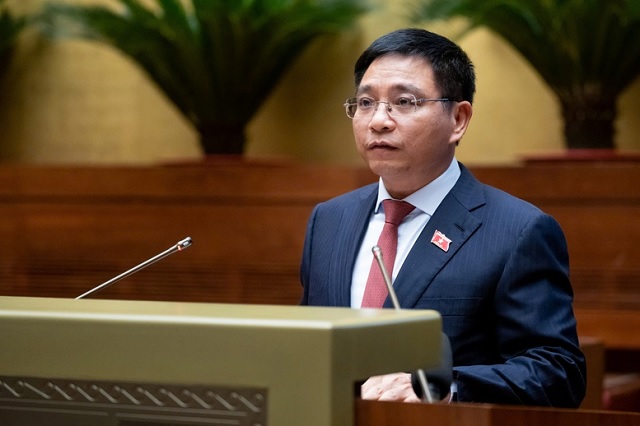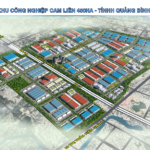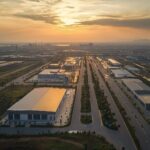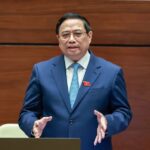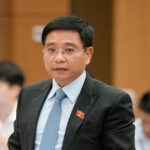On the afternoon of November 12, the National Assembly listened to the Proposal and Verification Report on adjusting the investment policy for the Long Thanh International Airport Project under Resolution No. 94/2015/QH13 of the National Assembly. The session was chaired by Vice Chairman of the National Assembly Nguyen Duc Hai.
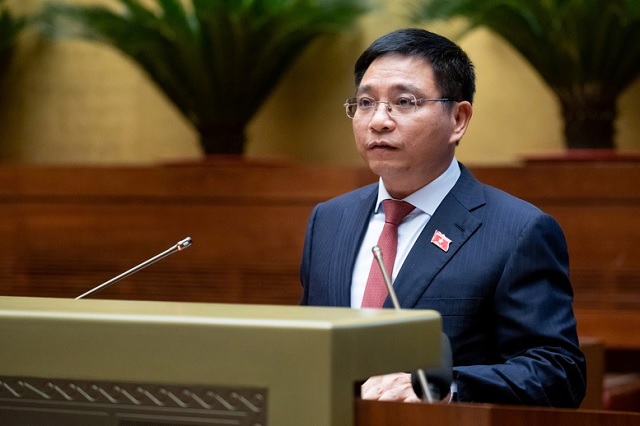
Minister of Transport Nguyen Van Thang reporting to the National Assembly on adjusting the investment policy for the Long Thanh International Airport Project – Photo: VGP/LS
|
Presenting the Proposal on adjusting the investment policy for the Long Thanh International Airport Project, Minister of Transport Nguyen Van Thang said that the National Assembly had approved the investment policy for the project under Resolution No. 94/2015/QH13, with an investment scale of 100 million passengers per year and a roadmap consisting of three phases. Phase 1 involves investing in one runway and one passenger terminal with a capacity of 25 million passengers per year, to be completed and put into operation by 2025. The Government was directed to prepare a feasibility report for each phase of the project and submit it to the National Assembly for approval before making an investment decision.
Regarding the investment scale for Phase 1, Minister Nguyen Van Thang said that at the time of submitting the investment policy for approval, due to difficulties in identifying investment capital, the National Assembly decided that Phase 1 of the project would only include the “Runway No. 1” in the northern area. In case of an incident on “Runway No. 1” that requires temporary closure, Tan Son Nhat International Airport will serve as a backup for Long Thanh International Airport.
During the implementation of Phase 1, the Government realized that constructing “Runway No. 3” 400 meters north of the currently invested “Runway No. 1” immediately in Phase 1 would bring numerous benefits. Investing in “Runway No. 3” during Phase 1 has several advantages: it conforms to the approved plan; the land has been cleared; the runway foundation has been graded to the designed elevation; it saves construction time and costs; and the capital has been arranged by the investor. Proceeding with this construction not only enhances investment efficiency but also contributes to completing transportation infrastructure, reducing logistics costs, and improving the competitiveness of the economy, thereby facilitating national defense and security tasks.
According to the Minister of Transport, the preparation and investment process for “Runway No. 3” will take approximately 24 months, and with the National Assembly’s approval, it will be completed by the end of 2026. The implementation of Phase 1 encountered some objective and subjective difficulties, resulting in a delay beyond the initial completion year of 2025. These included an extended architectural competition, the impact of the Covid-19 pandemic on technical design progress, two rounds of bidding required to select the construction contractor for the passenger terminal, and delays in the implementation of some aviation service works under the Component 4 project.
Regarding procedures, at the time of approving the investment policy, due to the project’s enormous scale and complex nature, without a defined investment plan, the National Assembly included in Resolution No. 94/2015/QH13 the requirement for the Government to “direct the preparation of a feasibility report for each phase of the project and submit it to the National Assembly for approval before making an investment decision.” Up to now, Phase 1 of the project has determined the implementation, investment, and management and exploitation methods. Therefore, the Government proposes that the National Assembly allow the Government to approve the adjusted feasibility report for Phase 1 of the project without submitting it to the National Assembly for approval.
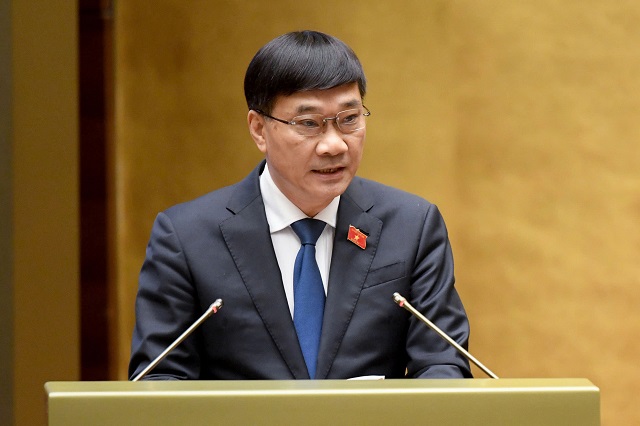
Chairman of the Economic Committee Vu Hong Thanh presenting the Verification Report
|
Reporting on the verification of this content, Chairman of the Economic Committee Vu Hong Thanh said that the Government’s proposal to the National Assembly to adjust the investment policy for the project was within the competence of the National Assembly as prescribed in Clause 1, Article 34 of the Law on Public Investment. The project dossier met the requirements of Article 20 of the Law on Public Investment. However, the Government submitted the project dossier to the National Assembly on November 6, 2024, which did not guarantee the deadline for submitting the dossier as prescribed in Clause 1, Article 21 of the Law on Public Investment, affecting the verification and participation in verification of the agencies of the National Assembly.
Regarding the necessity and content of adjusting the investment policy for the project, the Economic Committee agreed with the necessity and the three contents of adjusting the investment policy for the project for the reasons mentioned in Report No. 747/TTr-CP.
First, adjust the investment schedule for Runway No. 3 of the project from Phase 3 to Phase 1 to put it into operation synchronously with Phase 1, ensuring practicality and meeting the continuous operation needs of the airport in case of an incident on one runway, thereby improving the project’s investment efficiency…
Second, adjust the implementation time of Phase 1 of the project to December 31, 2026. Allowing this extension will facilitate the synchronization of auxiliary infrastructure, connecting routes, terminals, and other supporting works, especially aligning with the completion time of the investment in Runway No. 3, optimizing long-term operational efficiency.
However, some opinions requested clarifying the subjective reasons for the project’s delay and specifying the responsibilities and drawing lessons for the implementation of this project, in particular, and other key national projects, in general, to ensure the effective use of the State budget.
Third, allow the Government not to report to the National Assembly for approval before the Prime Minister approves the adjustment of the investment project to build the Long Thanh International Airport Phase 1 under its competence to promote the project’s progress and comply with the provisions of Point a, Clause 1, Article 40 of the Law on Public Investment.
In addition, the Chairman of the Economic Committee also said that some opinions suggested that the Government and local authorities continue to pay attention to stabilizing the lives, housing, livelihoods, and jobs of people with land recovered and those affected by the project. They also proposed that the Government, ministries, branches, and localities direct the resolution and handling of the limitations and shortcomings in the implementation of the Long Thanh International Airport Project Phase 1 to ensure the completion and efficient, economical, and anti-wasteful operation of the project.
The Next Big Industrial Hub: Quang Binh’s Upcoming 450-Hectare Project
Vice Prime Minister Tran Hong Ha has recently signed Decision No. 1388/QD-TTg, dated November 15, 2024, approving the investment policy for the construction and infrastructure development of the Cam Lien Industrial Park in Quang Binh Province. This decision encompasses a substantial area of 450 hectares, marking a significant step forward in the region’s industrial advancement.
“Presenting to the National Assembly: The Proposal for the High-Speed North-South Railway Project”
On the evening of November 6, at the National Assembly, right after the afternoon session of the 8th Session, the National Assembly Standing Committee met to discuss and provide opinions on the investment policy for the high-speed North-South railway project. The meeting was chaired by Mr. Nguyen Duc Hai, Vice Chairman of the National Assembly.

